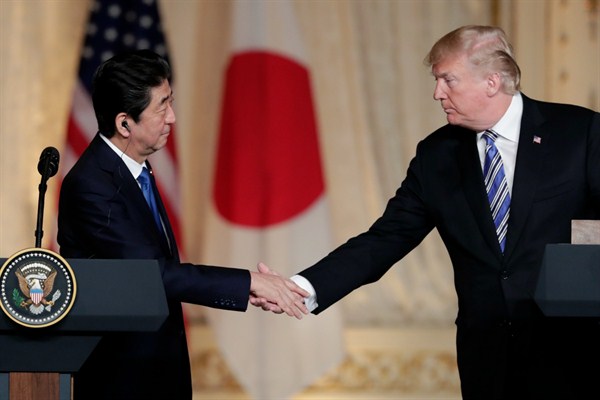President Donald Trump surprised almost everyone, including his closest economic advisers and both free trade advocates and protectionists in Congress, when he announced last week that the United States would consider rejoining the Trans-Pacific Partnership, the huge Pacific Rim trade pact that he withdrew from days after taking office. Trump had heavily criticized the TPP, the signature economic deal of the Obama administration, even calling it the “rape of our country” during the 2016 presidential campaign.
In light of such statements, most observers believed the Trump administration intended to pursue only bilateral free trade agreements, if any at all. As Trump had pledged, his administration would focus on renegotiating existing deals, such as the North American Free Trade Agreement and the U.S. free trade pact with South Korea, known as KORUS, in an effort to obtain better terms that would discourage American enterprises from manufacturing abroad.
Although Trump already rebuffed his own TPP reversal in a tweet earlier this week—writing that he didn’t in fact “like the deal for the United States. Too many contingencies and no way to get out if it doesn’t work”—that may not be the end of it, given his track record. Should the U.S. actually seek re-entry into the TPP, it would create enormous challenges, but also opportunities for both the U.S. and the 11 remaining parties to the agreement, among them close U.S. allies Canada, Japan and Australia. The modestly revised TPP without the U.S., known as the Comprehensive and Progressive TPP, or CPTPP, was signed on March 8 and is expected to go into effect for at least a majority of the parties by the end of 2018.

